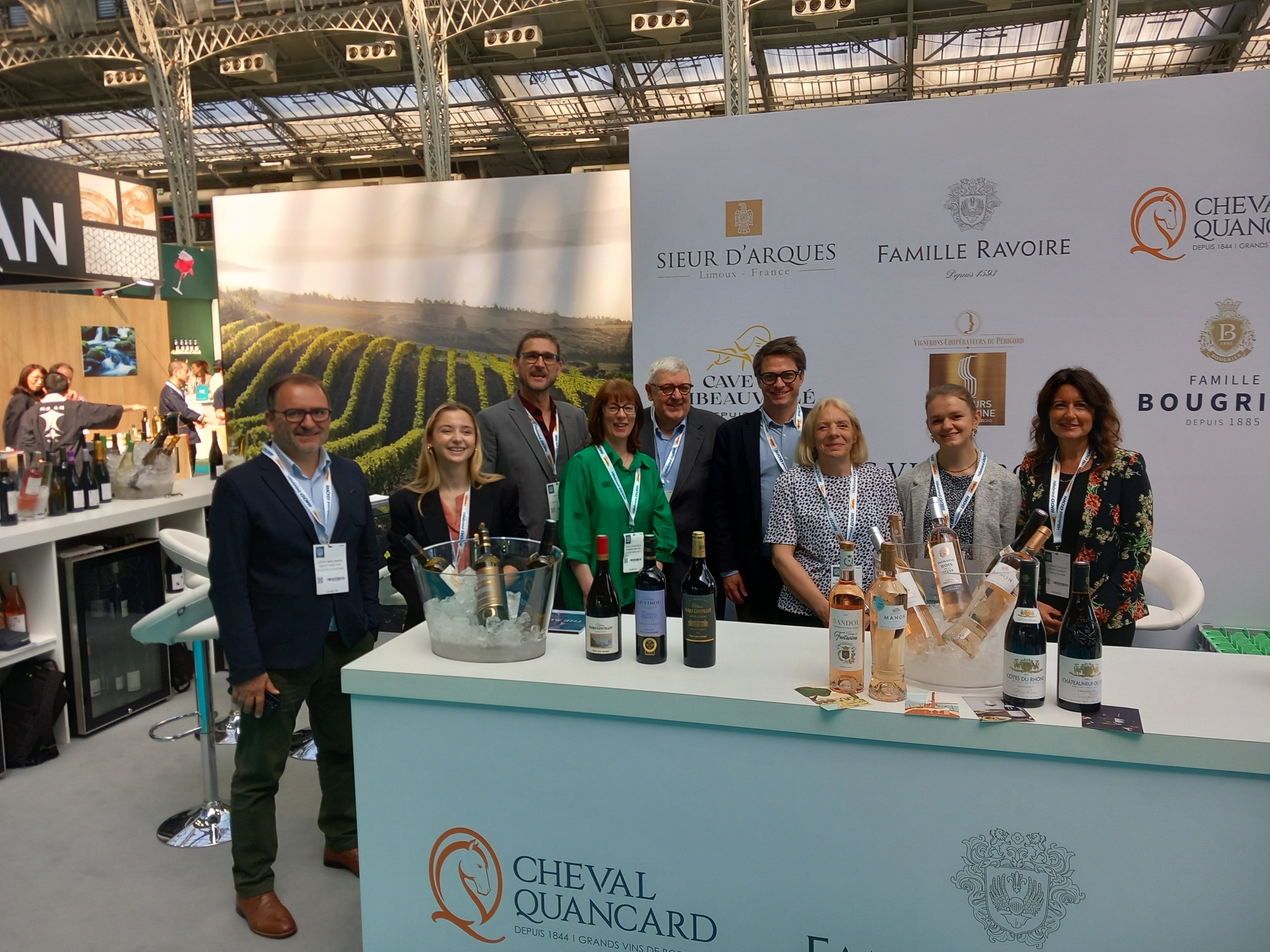“They believe that planting Chardonnay and Sauvignon Blanc at 650 metres above sea level, creates structured white wines with ageing potential,” writes Jones.
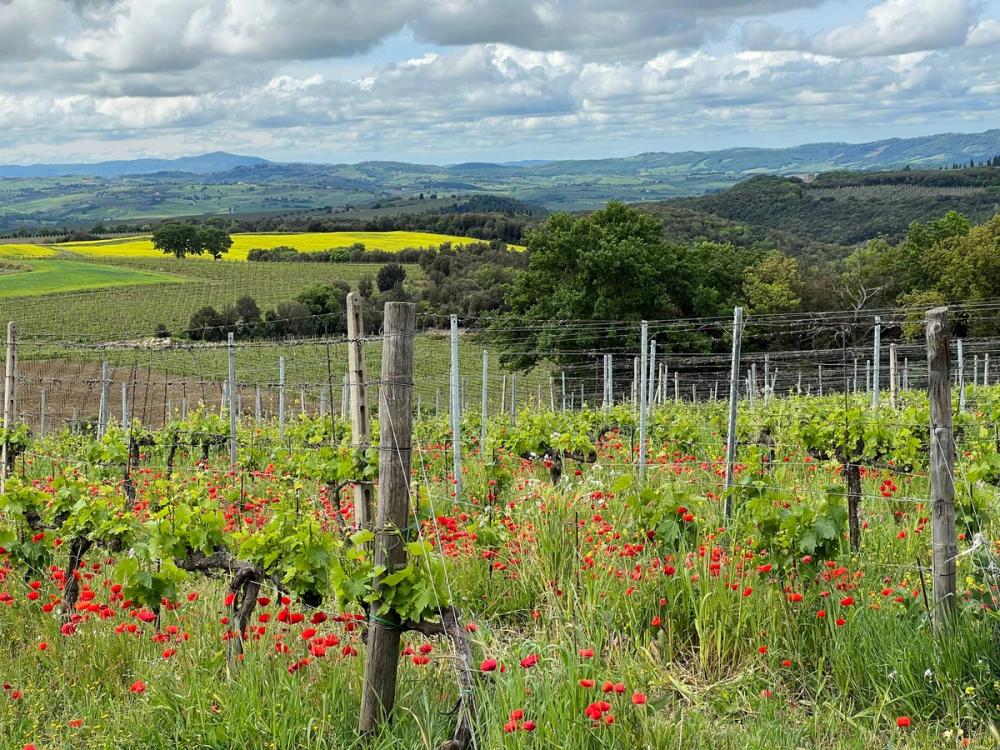
“A healthy vineyard is a place full of life.”
Giovanni Gaja, is the fifth generation of the Gaja family, founded in 1859 by Giovanni Gaja, when the family moved to Italy from Spain to the village of Barbaresco. The family now has estates in Montalcino, Bolgheri and on Sicily. He jokes that his family has no imagination when it comes to naming their children, so all men in his family are named either Giovanni or Angelo, successively.
Each generation, Giovanni explains, captures the dreams and vision of the previous generations and builds and innovates for the next. They have always been inspired by the respect for nature, highlighted by this statement: “A healthy vineyard is a place full of life. Our rows of vines are populated by spiders, earthworms, bees and countless other insects, but there is an inhabitant who, more than all others, is a symbol of the biodiversity that we cultivate, a delicate insect which lives in healthy environments and reminds us of our childhood and carefree moments: the butterfly.”
In 1961, the founder’s great-grandson, and current owner, Angelo Gaja took charge of the company marking the beginning of a revolutionary period not only for Gaja but for the Italian wine industry as a whole. However, today it is Angelo’s children, Gaia, Rosanna and Giovanni, who are at the helm of this legendary estate. Their father revolutionised viticulture and vinification techniques in the region, but now it is his children who must tackle and work with global warming and climate change. Similar to other leading wineries across the globe, they must work with these changes not against them.
They have invested in collaborations with botanists and entomologists, as well as instigating academic research, working with consultants outside the wine industry.
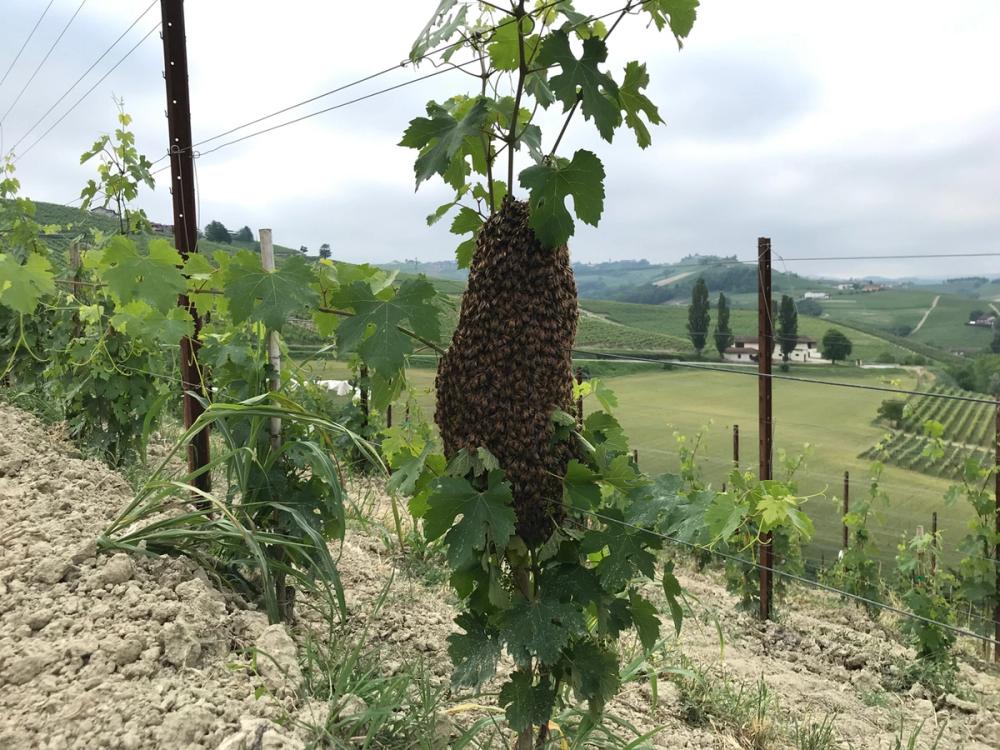
“The entomologists have been teaching us ways of fighting pests without chemicals”
“Climate change stresses all the excesses,” says Giovanni, “there is drought and also intense rain, everything is more intense. Spring frosts are more common: they come almost every year. Parasites are becoming much more aggressive so, instead of one generation of vine moths, we have three or four. The entomologists have been teaching us ways of fighting pests without chemicals.”
Each year the team at the estate release thousands of insects into the vineyard, however Giovanni stated that “The biggest evolution has been cover crop, 40 years ago there was a different concept: as soon as you saw grass growing you would cut it. Today we realise that grass is an important ally. We plant not only flowers but vegetables and cereals in vineyards that help nitrate and aerate the soils.”
“The main goal of working this way is not to make better wines. It is to gain resilience: to have vines that are less dependent on us. “
In the 1980s Italy was starting to gain fame for its red wines, quality white wines were not on the radar, but Angelo Gaja thought different, and had a vision that Piedmont could produce fine white wines with complexity and ability to age. He was the first to plant Chardonnay and Sauvignon Blanc in the region.
The Alta Langa Project

Gaja white wine was always sourced from the highest vineyards – now they are going higher
“Our newest project brings us to Langhe to cement our belief in the future of white wines,” says Giovanni. The historic white wine vineyards were are all planted in the Barbaresco and Barolo areas, and these were planted at a higher altitude to the reds. However, moving forward, they see it as important to continue to go higher in altitude, which led them to the new ‘chapter’ at Alta Langa.
Alta Langa is a hilly strip of land located southeast of the Barolo and Barbaresco areas, a much bigger region generally devoted to the production of hazelnuts and livestock (sheep, goat and cow for cheese production), and some ‘sparkling wine’. It is in general 4°C degrees cooler here and has a maritime influence as well as the wind, which enhances the freshness of the wines.
A new three-storey wine cellar is currently being constructed, dedicated solely to white wine production. Whilst Sauvignon Blanc and Chardonnay are the most commonly planted at Alta Langa (30 acres were purchased in 2015 and planted in 2018), other white varieties are being experimented with such as Timorasso, Manzoni Bianco and Pinot Bianco. They believe that planting Chardonnay and Sauvignon Blanc at 650 metres above sea level, creates structured white wines with ageing potential.
In 2017, Gaja embarked on a groundbreaking partnership to establish IDDA, a new winery located on the southwestern slope of Sicily’s Etna volcano. This venture, in collaboration with the Graci family, set out as a means to explore the potential of white wines, particularly focusing on the local Carricante grape. To date IDDA has been recognising the way white grape varieties can adapt to climate change and also witnessed how they tend to experience less concentration and dehydration compared to red varieties.
Tasting the new Gaja white wines
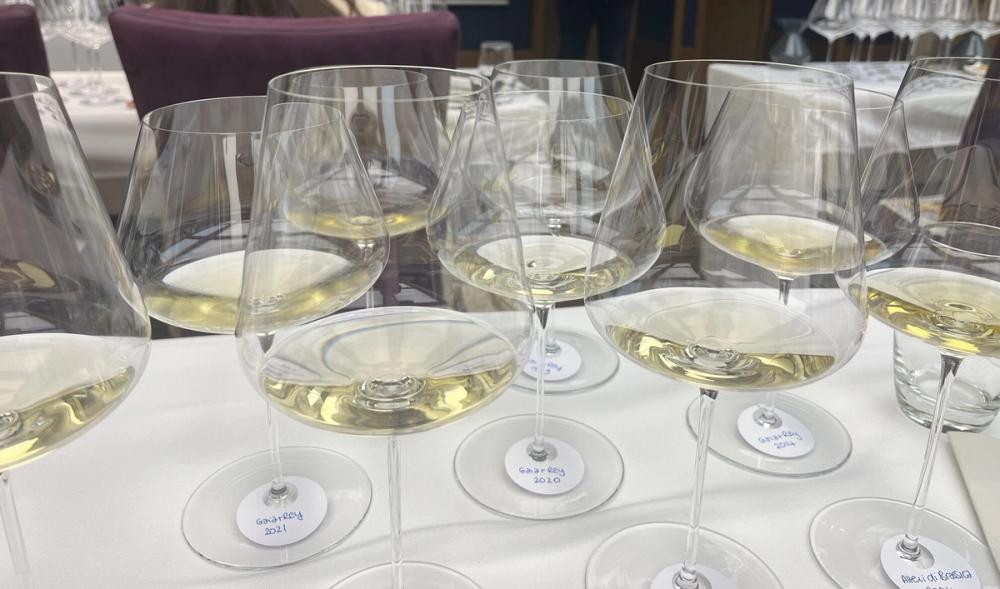
Gaja white wine masterclass with Giovanni Gaja, London
Gaja Rossj-Bass
The wine is produced from grapes grown in multiple estate-owned vineyards. The Rossj vineyard, planted in 1984, is named after Angelo Gaja’s youngest daughter Rossana “Rossj” Gaja. The grape variety is predominantly Chardonnay with a small portion of Sauvignon Blanc, aged in barrique for 6–7 months with malolactic fermentation.
Gaja Rossj-Bass 2021
90% Chardonnay with 10% Sauvignon Blanc. 80% made in stainless steel the rest in aged barrels. Chardonnay with a kiss of Sauvignon Blanc, bright fresh focused, enticing, for drinking in youth. Tropical with a clean crisp apple, pear and floral notes.
Alteni di Brassica
The vineyards were planted with Sauvignon Blanc in 1983. The name comes from the alteni, small stonewalls or ‘Clos’ that in the past surrounded the orchards in the area, and brassica, yellow flowers that cover the vineyards in the spring. It is a 100% Sauvignon Blanc, 6–8 months of barrique ageing with malolactic fermentation. The 2020 and 2021 are the latest iterations, using the grapes from the new vineyards in Alta Langa. Aged on the lees to give roundness.
Gaja Alteni di Brassica 2021
Textured, layered, still young but has a fabulous freshness balanced with texture, citrus zest, floral …I love that wonderful mouthfeel.
Gaja Alteni di Brassica 2020
Zesty, citrus, creamy, custard apple, beautiful mid-palate with a refreshing cleanness, mouthful of exotic styled fruit but restrained, touch of pineapple carpaccio.
Gaja Alteni di Brassica 2016
Restrained, delicate notes of Sauvignon Blanc, then lingers and some nectarines come to the fore then the mid-palate gives gooseberry, buttercups, this is elegant and showing well, on the finish there is still great freshness – vibrant and rather fine.
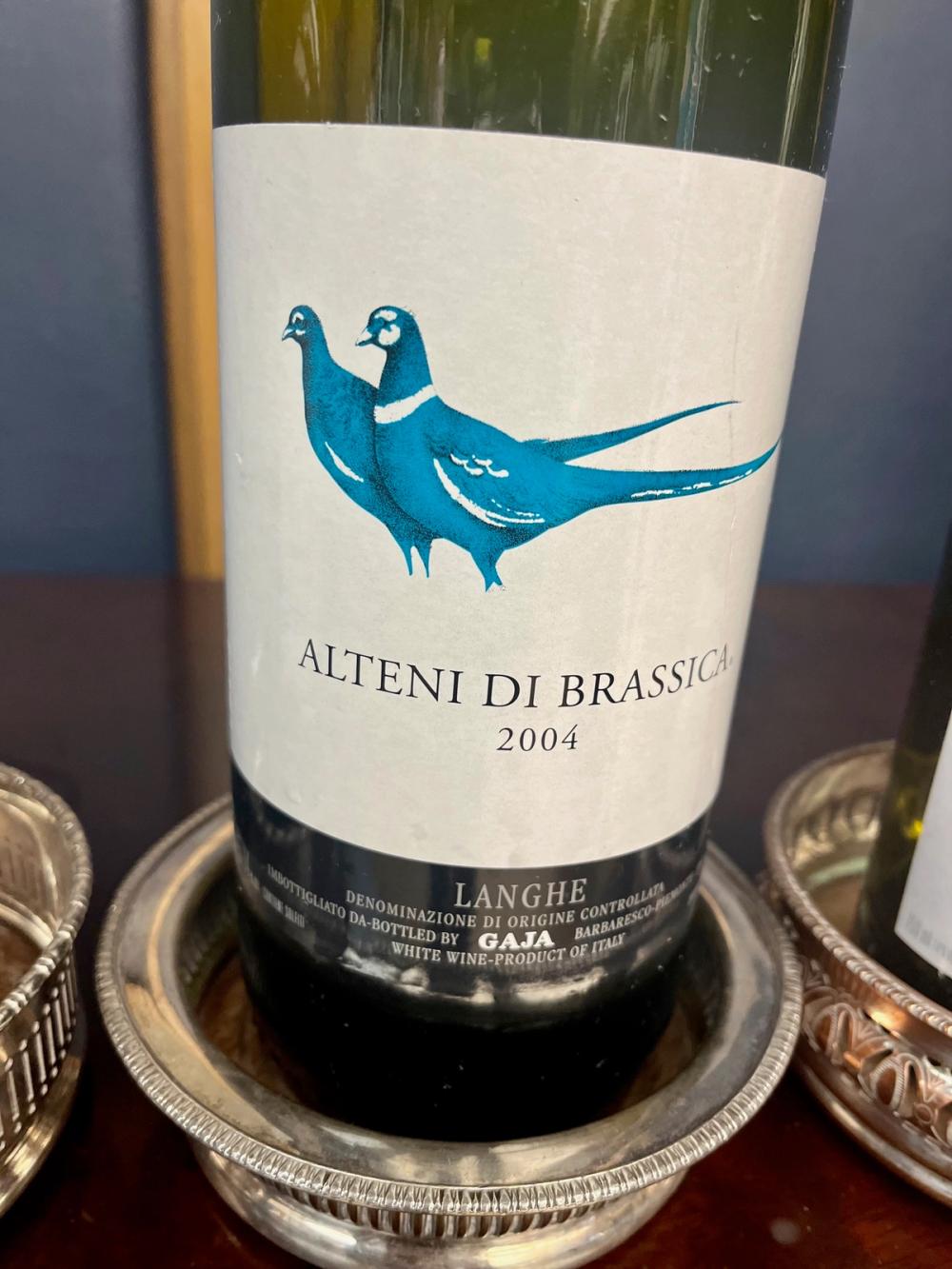
Gaja Alteni di Brassica 2004
Richly textured (not as fresh as above) quince and some liquor, creaminess, custard, grilled grapefruit, acidity a bit taut with more of a textured, aged feel.
Gaja Gaia & Rey
The estate’s first white wine, the original vineyard having been planted in Treiso in 1979 between Christmas and New Year’s Eve. Now sourced from two separate vineyards, which combined with the Serra vineyard amounts to 5.5 hectares. First vintage was in 1983. It is named after Angelo Gaja’s oldest daughter, Gaia Gaja, and his grandmother, Clotilde Rey.
Gaja Gaia & Rey 2021
Touch closed with a ginger, creamy feel, textured and young, layer upon layer, this is a dreamy wine waiting to open up,
Gaja Gaia & Rey 2020
Stunning purity of stone fruit is breathtaking, white peaches, nectarines, delicate and refined, fresh, wow. The nose and aromas are stunning, pink grapefruit, candied citrus, opens up beautifully in the glass.
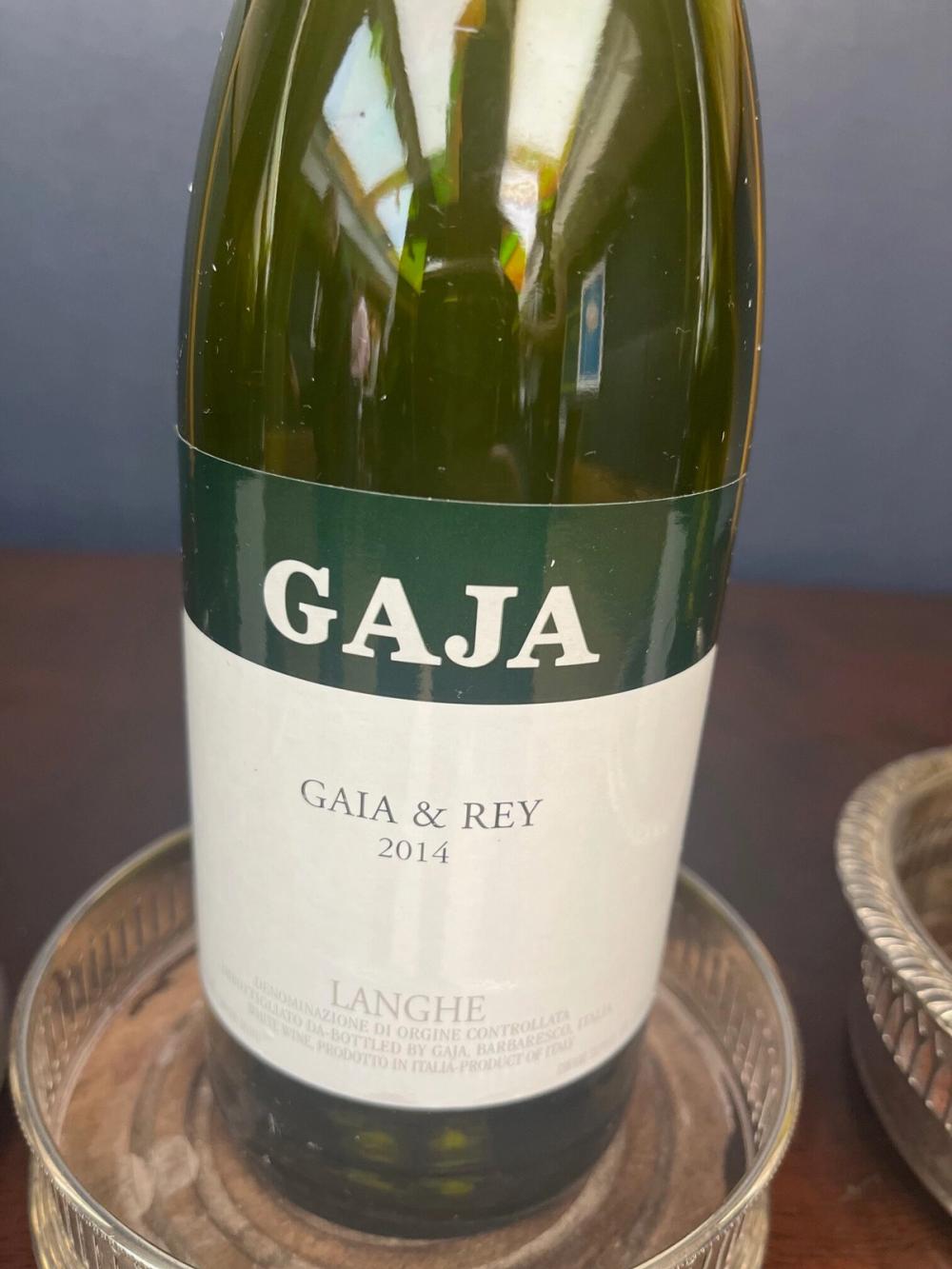
Gaja Gaia & Rey 2014
Shouts Chardonnay, clean, precise white fruit, buttercups, honey notes, more of a fruit salad on the palate, then as it evolves it has custard notes and pineapple essence.
Gaja Gaia & Rey 2012
Thick, textured with melon, clean stone fruit, lightly balanced, gentle spice, ginger and a fresh mouthfeel of clean acidity – tasting it again there is an amazing, gentle mid-palate that gives a luxurious feel and texture, a touch dusty but in a good way, with dried Pear William peel; on the finish it is incredible with pure apricot and nectarine juice balanced with a savoury note.
Gaja Gaia & Rey 1989
Textured, much like a white Rioja, with preserved citrus peel, hazelnuts, lemon sherbet, which gives it a lift and freshness – there is a bitterness (Italian style). Just stunning in the bottle, drinking perfectly.
Wines served with lunch at The Game Bird in Stafford Cellars
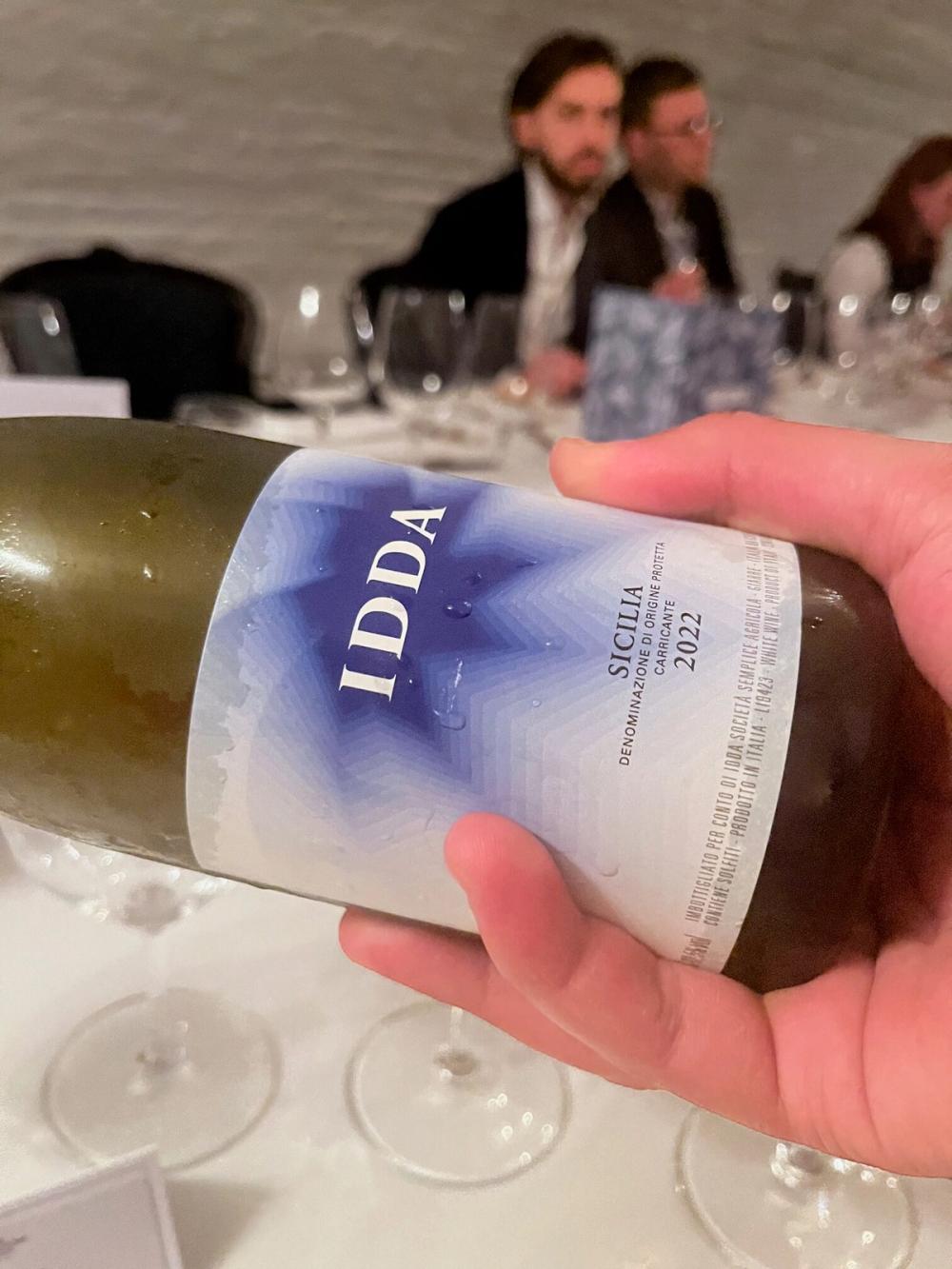
Idda, Biano Sicilia, Angelo Gaja & Aiberto Graci 2022
Minerality and delicate melon notes, underlined with a zippy freshness with mellow notes on the background, delicate basil and vine tomato notes, fresh and inviting.
Gaja Barbaresco 2020
Youthful with fresh, crisp, clean-cut acidity, some cherry and hints of Mirabelle plums – this is a classic young Bordeaux style, clear, clean and focused. Gorgeous perfume, crunchy and fine berry fruit. Served with lamb this was simply stunning, the crispness cutting through the delicious meat.
Ca’Marcanda Gaja Camarcanda 2020
Racy, truffle, plummy, fruit-driven, bright, clean, focused, refreshing fruit, blueberry and raspberry with lingering, long, ripe flavours. I love the purity – it is quite rich but there is great freshness here and a clean-cut finish. Violets, rose petals and herbaceous notes on the nose. A wine to age for a decade.
Ca’Marcanda Gaja Camarcanda 2018
Focused, restrained, lots of energy, mint and sage, dark berries, black cherries and plums. Drinking rather well, but will age.
The wines of Gaja are imported and sold in the UK through Hatch Mansfield which is a commercial partner of The Buyer. To discover more about them click here.



